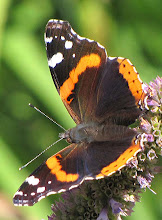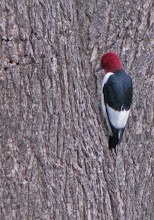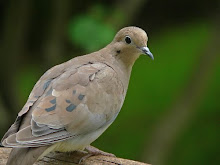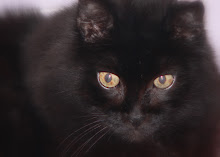- William Longgood
Dawn in my garden.
Much too hot to work outside in the heat of the day but the hours between 5 and 9 am are perfect in the garden. Hope we can all remain relatively comfortable thru this heat wave.
Dawn in my garden.
Much too hot to work outside in the heat of the day but the hours between 5 and 9 am are perfect in the garden. Hope we can all remain relatively comfortable thru this heat wave.
For most of us who are intimidated by theories of garden design,
the cottage garden provides immediate appeal, since it is a
horticultural rather than an architectural solution to a limited area.
~ Patricia Thorpe




















 The lovely elderberries are almost finished blooming. Every year, early in the autumn, the church just down the way from my farm has an annual dinner topped off by elderberry pie. The recipe probably goes back many, many years. Elderberries seem to have fallen out of favor with modern cooks.
The lovely elderberries are almost finished blooming. Every year, early in the autumn, the church just down the way from my farm has an annual dinner topped off by elderberry pie. The recipe probably goes back many, many years. Elderberries seem to have fallen out of favor with modern cooks.


The daylilies have begun blooming.
 Siloam Double Classic is my favorite today. I love the pale apricot color and the vivid yellow center that looks like it is lit from within.
Siloam Double Classic is my favorite today. I love the pale apricot color and the vivid yellow center that looks like it is lit from within.
Prairie Fire is a pretty red but the bright color streaks. It seems to be a common trait in the dark colors.
 Clear yellow Hyperion, the old faithful standby.
Clear yellow Hyperion, the old faithful standby.
Oriental lily Mona Lisa.
Here are a few of the shrub roses I didn’t include in previous posts.
Westerland
Autumn Sunset, a sport of Westerland.
Hybrid Tea Double Delight
Meideland Magic
On the ground wrens run through the garden like mice. This spring they are nesting in three of my birdhouses. The parents are in constant motion, frantically searching the garden to provide enough bugs to keep the growing chicks satisfied.
I found the first Japanese beetle Friday afternoon. So far there are just a few but by the first week in July there will be hundreds. I’m enjoying my roses now. When the beetles begin to destroy the blooms I will deadhead all the bushes and prevent them from blooming for the rest of the season. Sad but there is just no other way to battle these beetles.
The blackberries and strawberries are ripe. I think I’ll have a bowl of icecream with blackberries while sit on the porch and watch the last cardinal visit the feeder and the lightening bugs begin to flash one by one.

Gardeners are - let's face it - control freaks. Who else would
There is so much to be done in the garden and never enough time. Oriental lilies need staking , sedum must be cut back, more mulch needs to be spread after I top dress with alfalfa. The edging is looking ragged, bearded iris need to be dug and thinned, the trees all need cutting back, and on and on. I doubt I’ll ever get to it all.
Sunday afternoon I stopped worrying about chores and just enjoyed the garden. The roses are blooming. I overlooked the chewed leaves. My roses are never sprayed and they do surprisingly well. They may get some holes in their leaves and a little blackspot, still it seems better than a residue of poison left from spraying for inperfections. The poor gallicas got moved every year for four years and always had mildew. The unsightly white powder bothered me more than it effected the roses. This spring the gallicas did not get dug up and transplanted and they have no mildew.
(Gallica rose Surpasse Tout)
The annuals got planted late this spring and haven’t filled out much--disappointing. On the other hand some plants are performing much better than hoped for. The Jupiter’s beard has been blooming for two months, what a great little plant. The dicentra still have pretty hearts dangling from their stems and phlox pilosa is still covered in pink blooms. Geranium Rozanne is decked in pretty blue flowers. If she does as well as she did last year, she will bloom non stop through September.
I think my Griffith Buck roses deserve a tribute. These are some of my favorites and almost as easy and carefree as Knockout roses. Dr. Buck devoted his life to breeding beautiful roses that were both hardy and healthy.
The pale apricot Golden Unicorn.
Country Dancer with big bunches of blowsy pink blooms.
Different Drummer, the prima donna of the group but with lovely blooms.












































